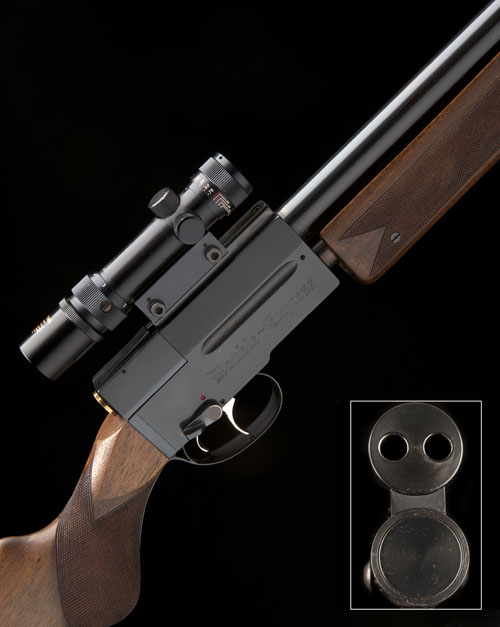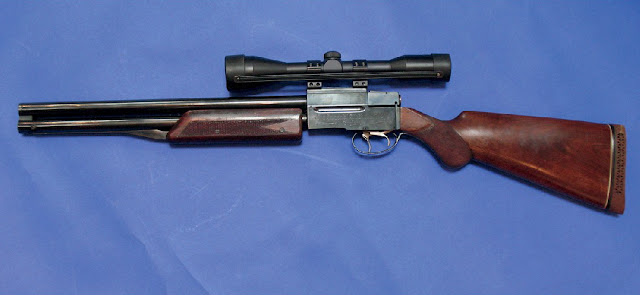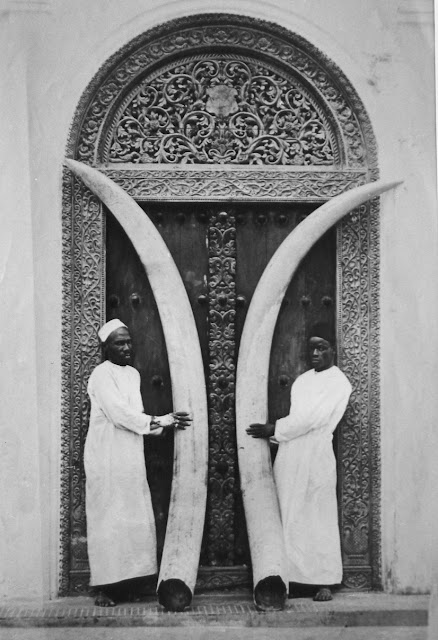Now there's something you don't see every day
Here's what I was able to google about it's history
"...The Imperial Double Express was the "cover girl" on "Airgun World" vol. 10 no. 9, April 1987. There was also a one-page article, two-page centerfold photo, and a full-page ad from The Airgun Centre in Rayleigh featuring the gun (price: 550 pounds).
The gun was designed and built by Mike Childs of Skan electronics, aided by Chris Price of Helston Airgunsmiths. [Skan make amazing pump action air rifles - have a look here]
The Double Express was designed to give two shots at about 10 fpe apiece, from only 10 pumps. It has the appearance of an over-under shotgun, but the lower tube is the pump tube of course, the shot tubes are side-by-side in the upper tube. It was intended to be available in .177, .22, or .25 per the customer's choice; two calibers in one gun was do-able. Each barrel was controlled by a separate trigger, and adjustable for zeroing at any desired distance. Power was adjustable as in all multi-pumps.
The breech design was very unusual, a single lever opening the pivoting breech for loading, and then a large brass button sizing both pellets on their way into the chamber. It had a safety.
The gun was reportedly well-balanced and weighed only 7 pounds without scope. No open sights were provided..."
Sale A1054 Lot 10
THE IMPERIAL AIR RIFLE CO. LTD., ENGLAND,
A RARE .22 MULTI-PUMP PNEUMATIC DOUBLE-BARRELLED AIR-RIFLE MODEL 'DOUBLE-EXPRESS', serial no. 13, circa 1986, with blued, shrouded 20 1/2in. barrels, blued receiver with hinged loading gate to rear engraved 'THE IMPERIAL AIR RIFLE CO. LTD, ENGLAND' on the left hand side and 'DOUBLE-EXPRESS' on the right, chequered walnut half-pistol grip butt with ventilated rubber recoil pad, chequered walnut forend/pump-handle, the whole appearing little used (two spots of mild corrosion on the left hand side of barrel and pump housing, valves require service) TOGETHER WITH an 'OPTIMA' 1.5-4X20 telescopic sight
Provenance: Always intended as a limited edition, only 25 of these unusual air-rifles were produced between 1986 and 1987
Estimate £2,500-3,000
Between writing this post and posting it the gun didn't sell so I got an email telling me it was in the un-sold lots an available for £2,500. Nice very nice, but not for me.
This one went for a grand as recently as last year
Back to posts about things that are vaguely affordable very soon
Your pal
SBW







